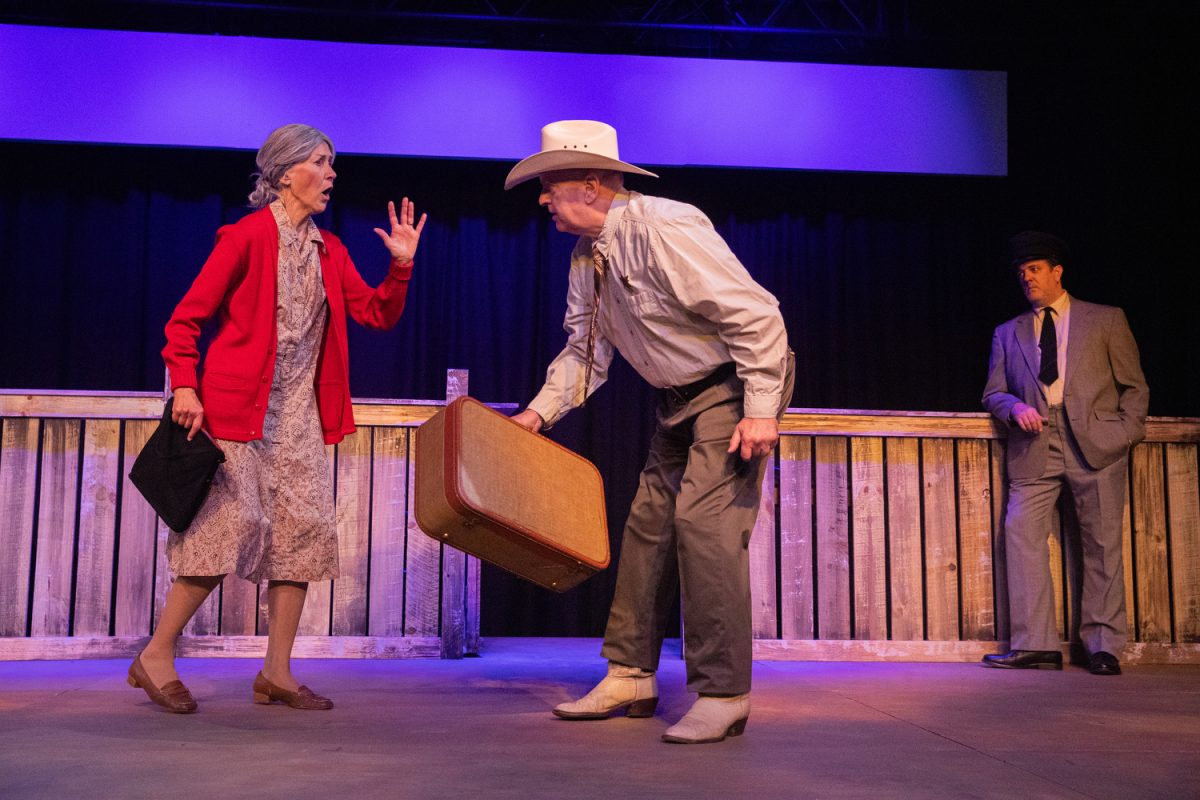On the opening night of “The Trip to Bountiful,” Riverside Director Adam Knight spoke to a packed theater, expressing his excitement for the play.
The stage was strategically filled with furniture, set to visually mimic the claustrophobia that Mrs. Watts, played by Jody Hovland, felt in her home. “The Trip to Bountiful” will be playing at Riverside Theatre until Nov. 5.
As the play started, it quickly became clear that the narrative operates off unique contrasts that drive the story, like the juxtaposition of Mrs. Watts and her daughter-in-law, Jessie Mae, when the two are first seen together on stage.
The actresses who played Mrs. Watts and Jessie Mae, played by Jessica Link, carried the play on their shoulders with their tedious back-and-forth over their behavioral differences.
The character of Jessie Mae is an insufferable, fiery woman who never allows herself to be in the wrong. Jessica Link’s portrayal of this character offers an undeniable disdain that justifiably propels Mrs. Watts away from her home and son, whom she cares for deeply.
This is where a distinct contrast between the first and second acts can be seen. The first hour and a half act as a slow burn, allowing the audience to sit with Mrs. Watts in her discomfort and showcase why this final trip to Bountiful before she passes is of such great importance to her.
At the end of this act, Jody Hovland gives an endearing monologue to Thelma, played by Jessica Murillo Kemp, a young woman her character meets on the bus as her voyage begins. Hovland’s performance fully enthralls the audience with her compelling nature as an overly optimistic, hymn-singing old woman.
The second act serves as the back half of the voyage and ultimately the play’s overall payoff. The concept of “Bountiful” is metaphorically tied to Watts herself: a land that was once plentiful and ready for harvest is now destitute and isolated.
The narrative of this play accounts for the success it had on Broadway, and Riverside brought together an eclectic group of individuals to perform this emotionally dense piece as if it were still showing in Times Square.
The stage directions were an additional contributor to the success of this rendition. The way the actors engaged with each other in the scene by doing things like yelling down imaginary hallways gave the stage a well-constructed atmosphere.
A great example of this is the way bus stop scenes were constructed. A bus pulling up during the play was not only represented by a large shining light and some sound effects on the set but also involved believable acting to the nonexistent scenery or aspects of a play.
Along with this, the stage was utilized well and nearly every inch of it was used for something at a point during the performance. Whether the actors were tucked away in the back corner, left or right center stage, or visually blocked by the props in some aspect, the stage felt alive.



